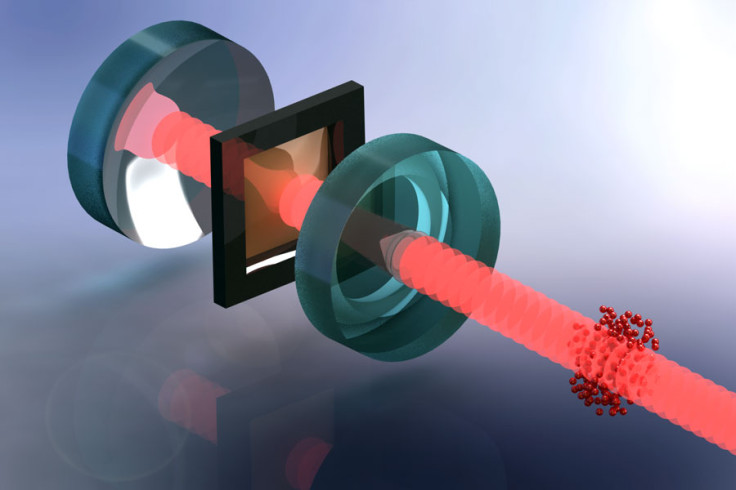Atomic Fridge: Ultracold Atoms Cool Small Membrane To Near Absolute Zero

An atomic cloud of ultra-cold atoms not bigger than a grain of sand has been used to cool a small membrane with billion more particles, to near absolute zero.
Researchers from the University of Basel led by Professor Philipp Treutlein have succeeded in experimentally showing for the first time that ultra-cold atoms can cool down the vibrations of a millimeter-sized membrane.
Theoretically, the concept had been established.
The results will now enable fundamental quantum physics experiments with a relatively macroscopic mechanical system, to be visible to the naked eye.
By generating entangled states between atoms and membrane, precise measurement of membrane vibrations will be possible. Sensors for small forces and masses can be developed.
The small silicon nitride film of 50 nm thickness oscillates up and down according to the temperature. The cooling by the atomic cloud brought down the vibrations to less than 1C above absolute zero.
The team next hopes to cool the membrane vibrations to the quantum-mechanical ground state.
Laser light was used to exert forces on the membrane and atoms. Vibration of the membrane changes the laser force on the atoms and vice versa. The laser transmits the cooling effect of the cloud over distances of several meters, and does not require the atomic cloud to be in direct contact with the membrane.
The interaction is strengthened by using a resonator system made of two mirrors, between which the membrane is sandwiched.
Speed of an atom
Atoms trapped inside a vacuum chamber and slowing down to a crawl have been cooled to temperatures of less than 1 millionth of a degree above absolute zero. But using such cold atoms to cool other objects has been viewed as impossible as they are so small even when in a collective cloud.
Such collections have been used to study atomic behaviour precisely and tune atomic clocks that work on the principle of energy emissions from the atoms.
At ultra-cold temperatures, atoms that normally whizz at around 500 metres per second slow down to less than a kilometre an hour.
Atoms in such a Bose-Einstein condensate, merge together and lose individual identity and behave more like waves than particles. Their behaviour is dominated by quantum mechanics.
© Copyright IBTimes 2025. All rights reserved.





















